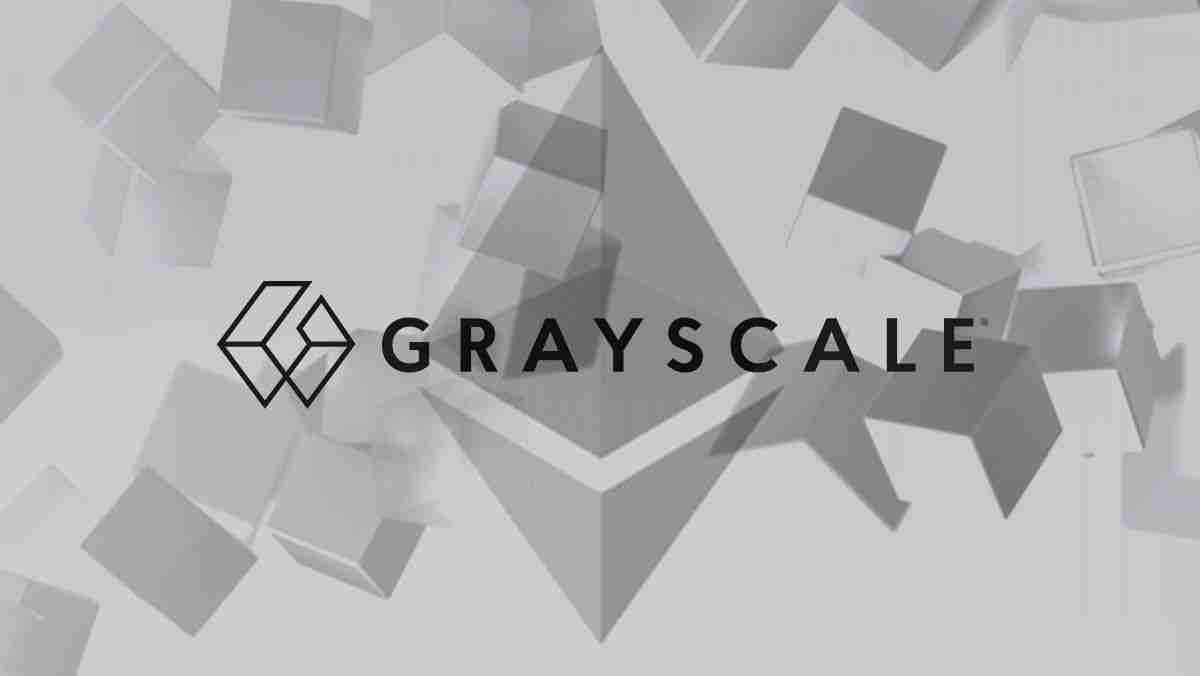Blockchain technology has revolutionized various industries, offering decentralized and transparent systems for transferring and storing value.
However, different blockchains operate independently, often creating silos that limit the seamless flow of assets between them. This fragmentation impedes the full potential of digital assets and restricts users from accessing the features and applications offered on other blockchain networks.
Wrapped tokens emerge as a solution to this challenge. They represent assets from one blockchain on a different blockchain, effectively bringing liquidity, interoperability, and expanded functionality to digital assets.
In the following pages, we will explore the underlying mechanisms of wrapped tokens, specifically focusing on wrapped Bitcoin. We will discuss the technical aspects of wrapping Bitcoin, its use cases, benefits, and limitations. By the end of this article, readers will have a comprehensive understanding of how wrapped tokens enable cross-chain compatibility and empower users to leverage the advantages of different blockchain networks.
Understanding Wrapped Tokens
Wrapped tokens are digital assets that represent other cryptocurrencies or assets on different blockchains. They serve as bridges, enabling the transfer of value and the utilization of assets across disparate blockchain networks. Wrapped tokens are designed to enhance liquidity, facilitate interoperability, and expand the functionality of assets within specific blockchain ecosystems.
The need for wrapped tokens arises from the fragmented nature of blockchain networks. Each blockchain operates independently and has its own set of rules, protocols, and token standards. This fragmentation limits the seamless transfer and utilization of assets between different blockchains. Wrapped tokens address this challenge by acting as a standardized representation of assets from one blockchain on another.
To better understand how wrapped tokens work, let’s consider an example. Suppose we have a hypothetical blockchain network, Blockchain A, that supports native tokens called Token A. Now, imagine another blockchain network, Blockchain B, which uses a different token standard and supports native tokens called Token B. These two blockchains are not directly compatible, making it challenging to transfer and utilize Token A on Blockchain B and vice versa.
In this scenario, a wrapped token, let’s call it Wrapped Token A, can be created on Blockchain B. Wrapped Token A represents Token A and maintains a fixed one-to-one relationship with it. This means that for every Wrapped Token A in circulation, there is an equivalent amount of Token A securely held in custody or reserve. Users can then transfer Wrapped Token A on Blockchain B, utilizing it within the applications and services available on that particular blockchain.
Wrapped tokens provide several benefits to the blockchain ecosystem. They enhance liquidity by allowing assets from one blockchain to be easily traded and utilized on another. This promotes cross-chain interactions, expands market access, and fosters a more interconnected ecosystem. Wrapped tokens also enable the utilization of assets in decentralized applications (DApps), decentralized finance (DeFi) protocols, and other blockchain-based services that may only support specific token standards.
Wrapped Bitcoin: Bringing BTC to Ethereum
Culled from (Wrapped Bitcoin (WBTC) Price Prediction: Will It Recover in 2022?,)
Wrapped Bitcoin (WBTC) is a specific example of a wrapped token that brings Bitcoin (BTC), the largest and most well-known cryptocurrency, to the Ethereum blockchain. By wrapping Bitcoin, users can access the benefits and features of the Ethereum ecosystem while still maintaining exposure to the value of Bitcoin.
The process of wrapping Bitcoin involves a custodian model, typically managed by a centralized entity or consortium. This custodian holds the Bitcoin reserves and is responsible for issuing the equivalent amount of wrapped Bitcoin tokens on the Ethereum blockchain. The custodian ensures transparency, security, and the maintenance of a one-to-one peg between wrapped Bitcoin and its underlying BTC.
The custodian model is designed to instill confidence in users by providing transparency and accountability. A reputable custodian is selected to hold the Bitcoin reserves, and the custodial entity is subject to audits and strict compliance standards. This ensures that the amount of Bitcoin held in custody always matches the total supply of wrapped Bitcoin tokens in circulation.
When a user wants to wrap their Bitcoin, they initiate a transaction by sending the desired amount of Bitcoin to a specific address provided by the custodian. The custodian verifies the transaction on the Bitcoin network and ensures the user’s Bitcoin is securely stored in reserve. Once the verification is complete, the custodian mints an equivalent amount of wrapped Bitcoin tokens on the Ethereum blockchain and assigns them to the user’s Ethereum address.
The wrapped Bitcoin tokens issued on Ethereum are typically implemented as ERC-20 tokens, which adhere to the Ethereum token standard. This standard ensures compatibility with Ethereum wallets, decentralized exchanges (DEXs), and other Ethereum-based applications and services.
The one-to-one peg between wrapped Bitcoin and Bitcoin means that each wrapped Bitcoin token represents and can be redeemed for the same amount of Bitcoin at any time. When a user wants to redeem their wrapped Bitcoin for the underlying Bitcoin, they initiate a transaction to send the wrapped tokens back to the custodian. The custodian verifies the transaction and then burns (destroys) the wrapped tokens. Subsequently, the custodian releases the equivalent amount of Bitcoin to the user’s designated address.
The introduction of wrapped Bitcoin has opened up new possibilities for Bitcoin holders within the Ethereum ecosystem. Users can now access decentralized finance (DeFi) applications, participate in lending protocols, trade on Ethereum-based DEXs, and utilize their Bitcoin as collateral for various financial services. Wrapped Bitcoin has significantly increased liquidity and utility for Bitcoin, enabling it to seamlessly interact with the vibrant Ethereum ecosystem.
Use Cases and Applications
Wrapped Bitcoin (WBTC) has unlocked a wide range of use cases and applications within the Ethereum ecosystem. Let’s explore some of the prominent ways in which WBTC is utilized:
- Decentralized Finance (DeFi): Wrapped Bitcoin plays a vital role in DeFi applications. Users can utilize WBTC as collateral to borrow stablecoins, participate in liquidity provision on decentralized exchanges (DEXs), and earn yield through various lending and staking protocols. By bringing Bitcoin into the DeFi ecosystem, WBTC expands the range of assets available for DeFi participants, allowing them to access Ethereum-based financial services using their Bitcoin holdings.
- Trading on DEXs: Wrapped Bitcoin is listed on numerous decentralized exchanges, enabling users to trade WBTC against other tokens without needing to convert back to native Bitcoin. This liquidity opens up new trading opportunities for Bitcoin holders within the Ethereum ecosystem. It also facilitates the creation of innovative trading strategies and arbitrage opportunities between different decentralized exchanges.
- Cross-Chain Liquidity: WBTC serves as a bridge between the Bitcoin and Ethereum ecosystems, allowing users to access the extensive range of services available on Ethereum using their Bitcoin. This cross-chain liquidity promotes seamless value transfer and enables users to tap into the vibrant Ethereum DeFi ecosystem, including lending, borrowing, and yield farming protocols.
- Asset Management: Institutional investors and asset managers can utilize wrapped Bitcoin to gain exposure to Bitcoin while leveraging the advanced features and infrastructure of the Ethereum blockchain. By holding WBTC, they can access a broader range of financial instruments and services, such as portfolio management tools, tokenized asset platforms, and decentralized exchanges, to optimize their investment strategies.
- Payment Solutions: Wrapped Bitcoin can be utilized as a medium of exchange for payments within the Ethereum ecosystem. Merchants and service providers can accept WBTC as a form of payment, offering more flexibility to customers who hold Bitcoin. This integration of wrapped Bitcoin as a payment solution paves the way for broader adoption of digital assets in everyday transactions.
- Collateralization: WBTC can be used as collateral for obtaining loans in decentralized lending protocols. Users can lock their WBTC as collateral and borrow other assets, such as stablecoins or other ERC-20 tokens. This feature provides liquidity to Bitcoin holders who want to access funds without selling their Bitcoin holdings.
- Tokenized Securities and Derivatives: WBTC can also serve as a building block for tokenizing securities and creating complex financial instruments on the Ethereum blockchain. By representing the value of Bitcoin as an ERC-20 token, developers can leverage WBTC to create tokenized versions of stocks, bonds, or other traditional financial assets. Additionally, WBTC can be utilized as an underlying asset for creating Bitcoin-based derivatives and financial products.
The use cases for wrapped Bitcoin are continually evolving as the Ethereum ecosystem expands and new applications emerge. For example, as more developers and entrepreneurs innovate with WBTC, the possibilities for leveraging Bitcoin within Ethereum’s (or any other token’s) decentralized infrastructure will continue to grow, further bridging the gap between these blockchain networks.
Benefits, Limitations, and Challenges of Wrapped Bitcoin
Wrapped Bitcoin (WBTC) brings several benefits to the blockchain ecosystem, but it is essential to consider its limitations and challenges. Let’s examine both aspects:
Benefits of Wrapped Bitcoin:
- Enhanced Liquidity: WBTC increases the liquidity of Bitcoin by enabling its seamless transfer and utilization within the Ethereum ecosystem. It opens up a broader range of trading opportunities and access to decentralized finance (DeFi) services, ultimately enhancing market efficiency and depth.
- Interoperability: WBTC acts as a bridge between the Bitcoin and Ethereum blockchains, facilitating cross-chain interoperability. Bitcoin holders can leverage the extensive features and applications of the Ethereum ecosystem without needing to sell their Bitcoin holdings.
- Expanded Use Cases: By bringing Bitcoin to Ethereum, WBTC expands the potential use cases for Bitcoin. It allows users to participate in DeFi protocols, earn yield, collateralize loans, and engage in various financial activities that were previously only accessible within the Ethereum ecosystem.
- Transparency and Security: The custodian model adopted by WBTC provides transparency and accountability. Users can verify the reserve of Bitcoin held by the custodian, ensuring that each WBTC token represents an equivalent amount of Bitcoin. Additionally, the use of secure storage mechanisms and audits adds an extra layer of security to the custodian’s reserves.
Limitations and Challenges:
- Custodial Model: The reliance on a custodian introduces a degree of centralization and counterparty risk. Users must trust the custodian to hold and manage the underlying Bitcoin reserves securely. In contrast to the decentralized nature of Bitcoin, WBTC introduces a centralized component, which may not align with the principles of decentralization.
- Liquidity Constraints: The liquidity of WBTC is dependent on the custodian’s ability to meet redemption requests. If the custodian faces liquidity challenges or fails to honor redemption requests promptly, it may impact WBTC’s overall liquidity and user confidence.
- Regulatory Considerations: WBTC operates within the existing regulatory frameworks governing Bitcoin and Ethereum. However, there may be additional regulatory considerations and compliance requirements when it comes to the custodians and their operations. Any changes in regulations could potentially impact the operations and availability of WBTC.
- Economic and Technical Risks: Wrapped tokens like WBTC rely on smart contracts and the underlying blockchain infrastructure. Economic risks, such as potential exploits or vulnerabilities in the smart contracts, could result in financial loss. Technical risks, including network congestion or disruptions, may also affect the usability and availability of WBTC.
It is crucial to carefully assess the benefits, limitations, and risks associated with utilizing wrapped Bitcoin or tokens. Understanding the custodian’s reputation, security measures, and compliance practices is essential for making informed decisions and mitigating potential risks.
Can wrapped tokens be a suitable investment option?
When considering wrapped tokens as an investment, beginners should keep a few things in mind. Firstly, they should look at the market demand and adoption of the wrapped token. If the token is gaining popularity and being adopted by different platforms, it could be a positive sign for potential investment. High demand and widespread adoption can contribute to liquidity and potential price appreciation.
Secondly, it’s important to understand the value of the underlying asset that the wrapped token represents. The underlying asset is what gives the wrapped token its value. Beginners should evaluate the stability and potential growth of the asset. For example, if a wrapped token represents Bitcoin, understanding the dynamics of the Bitcoin market and its long-term growth potential can help inform investment decisions.
Additionally, beginners should be aware of the risks associated with wrapped tokens. One aspect to consider is the custodial risk. Wrapped tokens rely on custodians to hold and manage the underlying assets. It’s crucial to assess the custodian’s reputation, security practices, and compliance measures to mitigate potential risks.
Furthermore, beginners should be mindful of the regulatory landscape surrounding wrapped tokens. Regulations can vary by jurisdiction and may impact the viability and market dynamics of these tokens. It’s essential to stay informed about any regulatory changes or uncertainties that may affect the investment.
In conclusion, while considering wrapped tokens as an investment, beginners should evaluate the market demand, understand the value of the underlying asset, and be aware of the associated risks and regulatory considerations. Thorough research, seeking advice from experts, and exercising caution are key when venturing into the world of wrapped tokens. By staying informed and making well-informed investment decisions, beginners can navigate this space with greater confidence.
Conclusion and Key Takeaways
Wrapped tokens, including wrapped Bitcoin (WBTC), serve as bridges between different blockchains, enhancing liquidity and expanding asset functionality. WBTC specifically brings Bitcoin to the Ethereum ecosystem, enabling users to leverage Ethereum’s features and applications. It facilitates participation in DeFi protocols, trading on decentralized exchanges, cross-chain liquidity, asset management, payment solutions, collateralization, and tokenized securities.
The benefits of WBTC include improved liquidity, interoperability, expanded use cases, transparency, and security. However, there are also limitations and challenges such as the custodial model, liquidity constraints, regulatory considerations, and economic and technical risks. Careful evaluation of the custodian’s reputation and practices is necessary.
Finally, wrapped tokens like WBTC play a crucial role in the evolving blockchain landscape, enabling seamless value transfer and interoperability. By understanding their applications, users can navigate decentralized finance and leverage the benefits of different blockchain ecosystems while effectively utilizing their digital assets.









